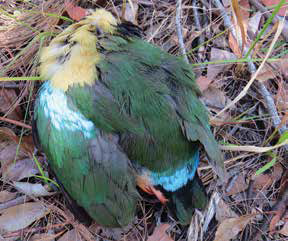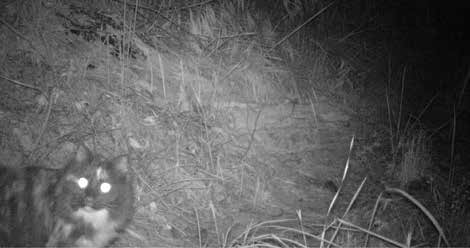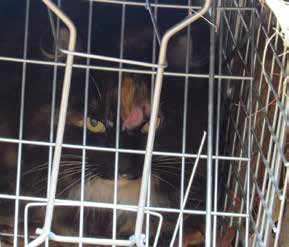
A few months ago I was puzzled by the appearance of a decapitated Emerald Dove next to the house, gratefully recognised by a Grey Butcherbird as a welcome breakfast. It made me wonder if the butcherbird would be capable of killing this species?
Some months later I came across another beheaded bird on our property, this time a Noisy Pitta. How did this happen? Had it been accidentally dropped by a bird of prey?
A bit distressed about finding such a beautiful bird killed on my property, I contacted Todd Burrows from the City of Gold Coast Conservation Partnership Program in the hope of getting to the bottom of this.
Our property does not have rainforest, which is the preferred habitat of Noisy Pittas, but is rather semi-open forest with a denser understorey, so I wasn’t quite sure if the bird was a Noisy Pitta at all. Todd confirmed the identity of the bird and pointed out that the cat we had recently photographed on our wildlife motion sensor camera may be responsible. He also suggested that the cat was likely to be someone’s pet that was just killing instinctively.
Armed with the printout of the cat image, I decided to check the neighbourhood to see if this cat belonged to someone. It turned out that a few people had also seen the cat, but nobody seemed to own it. That felt like a free ticket to buy a cage trap and get the cat as soon as possible to prevent any more unnecessary wildlife deaths. It took only one night and the cat was in the trap! Oily, smelly sardines did the trick.
The cat was then picked up by an officer from Council’s Animal Management Unit. It turned out that it was a pet cat, but the owner did not claim the cat from the Council animal shelter within the time allowed, so the cat was transferred to the Animal Welfare League. Perhaps it will be re-homed and hopefully a more responsible pet owner will look after it in the future.
It is pleasing to know that we have done our bit to support the wildlife on our property by removing this cat, but sadly it was too late for those ground feeding birds, and probably many other animals, that were easy prey.
As I have experienced, it only takes one straying cat to do significant harm to wildlife. Given our wildlife are already under great pressure due to habitat loss and introduced feral predators, they certainly can do without being hunted by straying pets, regardless of whether they are killing because of hunger or not.
“It only takes one straying cat to do significant harm to wildlife.”
The wildlife motion sensor cameras, installed in our bushland, have proved to be very helpful tools on more than one occasion to help manage our little Land for Wildlife property. The list of native and unfortunately feral animals on our property has grown ever since we put up the first camera a few years ago. Once you know what’s ‘down in the bush’, in particularly at night, you see your property in a very different way and the urge to protect and support it grows with these discoveries.
 This seemingly well-fed pet cat was allowed to roam widely at night and was instinctively hunting, but not eating, wildlife.
This seemingly well-fed pet cat was allowed to roam widely at night and was instinctively hunting, but not eating, wildlife.
 The culprit caught in a trap.
The culprit caught in a trap.
Article by Ute and Jens Sohnrey Land for Wildlife members Clagiraba, Gold Coast
